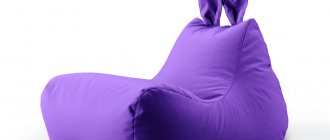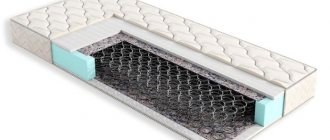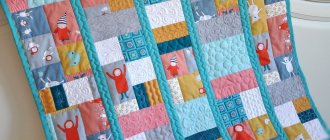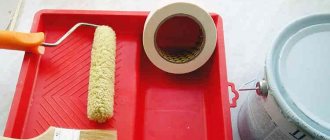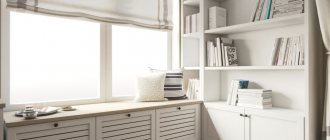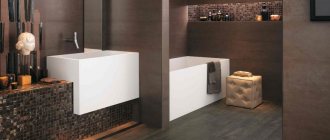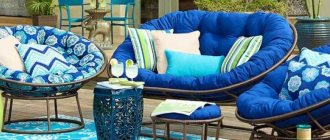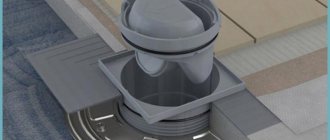Bird fluff
Goose down is the most popular and traditional natural filler of animal origin.
Pros:
- High warming ability. Down is very warm and has excellent thermoregulation.
- Breathability. The down filling allows air to pass through well, creating a comfortable microclimate under the blanket.
- Elasticity and non-flexibility. The duvet quickly recovers and does not lose its lush shape for a long time.
- Light weight. No filler can compete with the lightness of down.
- Antistatic. Down is not electrified.
- Durability. A duvet lasts up to 20 years.
Minuses:
- Allergenicity. Down is an ideal breeding ground for dust mites.
- Poor moisture exchange. Absorbing up to 45% of moisture relative to its own weight, down does not evaporate and quickly becomes damp.
- High price. 100% down blankets are the most expensive.
- Difficult care. Duvets require anti-mite treatment and special storage.
The quality of duvets has been tested by time, and modern technologies have taken it to a new level. Such a blanket will not be cheap, but its cost will be repaid by its long service life.
Which blanket is the lightest and warmest?
There are only two clear favorites for cold winter nights:
- traditional duvet;
- lyocell blankets.
Both products are as light and airy as possible. Bedding filled with waterfowl down is suitable even for sleeping with the windows open when the temperature outside has dropped well below zero. But such blankets are contraindicated for allergy sufferers, so you will have to choose an alternative option.
Lyocell is not inferior to down products in terms of lightness: it is very pleasant to cover yourself with such a product. But lyocell’s ability to retain heat is lower. Therefore, manufacturers use dense synthetic materials as a cover, achieving the effect of a thermos. As a result, the blankets become very warm, remain light, but do not allow air to pass through well. Therefore, lyocell is not suitable for people who sweat a lot.
Sheep's wool
The second most popular (after bird down) natural filler.
Pros:
- Medicinal properties. Sheep wool has been used for centuries to treat osteochondrosis and muscle pain.
- The ability to warm with dry heat. The warming properties of sheepskin are second only to down and camel hair.
- Breathability. Air passes freely through the wool filling, maintaining the optimal temperature for sleeping under the blanket.
- High moisture exchange. Sheepskin perfectly absorbs and evaporates moisture while remaining dry.
- Antistatic. Sheep wool does not accumulate static electricity and neutralizes its negative effects.
- Affordable price. This natural filler is cheaper than many types of synthetics.
Minuses:
- Allergenicity. Allergies to wool can be caused not only by dust mites, but also by animal wax.
- Caking. Sheep blankets cake after 3-4 years of use.
- Heavy weight. The only ones heavier than sheepskin blankets are cotton ones.
- Difficult to care for. For wool, only dry cleaning is allowed.
Sheep blankets are popular all over the world because they are ideal for people who prefer the naturalness of animal raw materials combined with affordable prices.
Camel's wool
Camel wool is as popular in the East as sheep wool in the West, but the quality of camel filler is considered higher.
Pros:
- Medicinal properties. Like sheep, camel wool provides dry warmth, reduces muscle pain and reduces cold symptoms.
- Low thermal conductivity. Camel hair is as warm as down.
- Excellent moisture exchange. Camel filler perfectly evaporates and absorbs moisture.
- Breathability. It is impossible to sweat under a camel blanket.
- Durability. Camel blankets last up to 30 years.
- Unbreakability. Camel hair is very elastic and holds its shape perfectly.
- Ease. A camel blanket is not much heavier than a down blanket.
- Antistatic. Camel wool does not electrify and neutralizes the effects of static electricity.
Minuses:
- Allergenicity. The scourge of all allergy sufferers - dust mites also live in camel hair.
- Prickly. This property is inherent only in products made from raw materials collected from adult animals.
- High price. A camel blanket costs no less than a down blanket.
When deciding which filling for a blanket is better: down, camel or sheep, keep in mind that their properties are largely similar. At the same time, a camel blanket, unlike a down blanket, has excellent moisture exchange, is lighter and more durable than a sheep blanket.
Choosing the right size
Choosing the size of a blanket for your bed is extremely simple. Traditionally, blankets are made in standard sizes. Among them there are several groups:
- One and a half blanket. This is a convenient and practical option for those who sleep alone or for spouses who prefer separate blankets. Typically, one-and-a-half blankets are made in two types - 155x215 cm and 140x205 cm. Products with other parameters are less common.
- Double blanket. For our country, the standard is a blanket measuring 172x205 cm; in Europe, other variations are accepted.
- Euro size blanket. The same double blanket, slightly increased in size. Its width is 195 or 220 cm, and its length is 15 or 240 cm.
- Baby blanket. It is customary to divide it into children's and teenagers'. The first group includes blankets measuring 110 by 140 cm and 125 by 160 cm. The second group includes blankets with a width of 143 to 160 cm and a length of 210 to 230 cm.
Important point: When choosing a blanket, rely on the size of the bed. The product parameters should not be less than 50 cm.
Swan's down (thinsulate)
Thinsulate is an artificial filler, originally created as an analogue of natural swan down.
Pros:
- Hypoallergenic. Thinsulate does not create conditions for the development of pathogenic microorganisms and is absolutely harmless.
- Low thermal conductivity. Artificial down is as warm as natural down.
- Ease. A standard “swan” blanket weighs no more than 500 grams.
- Elasticity. Thinsulate does not cake, easily restores and keeps its shape.
- Easy care. Swan down can withstand numerous washes and dries quickly.
Minuses:
- Zero hygroscopicity. Artificial down does not absorb moisture.
- Electrification. Thinsulate accumulates static electricity.
- Does not allow air to pass through. When sleeping under such a blanket, there is a risk of overheating.
The most suitable time of year to use a swan down blanket is the off-season. It will be hot under it in summer and cool in winter.
Polyester fiber
Most of the latest generation artificial fillers, such as holofiber, comforter, ecofiber, silicone fiber, microfiber, are made from polyester fiber. They differ in appearance, but their basic qualities are identical.
Pros:
- Hypoallergenic. Polyester fillers are absolutely harmless to human health.
- Elasticity. Artificial fibers hold their shape well and do not pill or cake.
- Low thermal conductivity. Thanks to its hollow structure, polyester fillers retain heat well.
- Light weight. Synthetics are not much heavier than down.
- Easy to care for. All these materials are easy to wash and dry quickly.
- Durability. The service life of polyester fillers is at least 10 years.
Minuses:
- Zero hygroscopicity. Artificial materials do not absorb moisture well.
- Electrification. Such blankets quickly accumulate static electricity.
The latest generation of synthetic fillers can be a good replacement for products made from natural fillers. The question of which blanket is best to buy when choosing from a variety of polyester fibers is not fundamental. Their consumer properties are approximately the same.
Types of synthetic blankets
Almost all blankets with natural fillings have one very significant drawback: they are difficult to care for. It is almost impossible to wash down, wool, or wadded blankets at home. And this is a big problem for people who sweat a lot. At the same time, the opinion is firmly rooted that no synthetic blanket can compare in warmth to a natural one.
We have compiled a rating of the warmest synthetic fillers. At the top are winter materials, below are colder products whose thermal conductivity is higher.
Artificial down
An analogue of feather and down of waterfowl and today the warmest of all synthetic fillers.
Benefits of blankets:
- Volumetric.
- Lungs.
- Warm.
- Practical.
Flaws:
- They do not absorb moisture.
- Poor air permeability: if you choose a product with a higher density than required by the ambient temperature, there is a risk of overheating.
Price:
from 700 rub.
Of all synthetic fillers, artificial down is the most durable. It holds its shape well, does not cake and quickly restores its shape after a night's sleep.
Holofiber
Holofiber fibers have the shape of springs. It provides elasticity to the finished product. Holofiber is denser than artificial down and is slightly inferior to the latter in its ability to retain heat. Therefore, blankets filled with this material are perfect for warm winters and mid-season.
Benefits of blankets:
- Lungs.
- Warm.
- Withstands multiple machine washes.
Flaws:
- They do not absorb moisture well.
Price:
from 400 rub.
Blankets filled with holofiber do not absorb foreign odors and are not capable of causing allergies. Therefore, most modern children's bedding sets are sewn using this particular filler.
Silicone
A more modern type of padding polyester in the form of miniature spheres. While such a blanket is new, there can be no complaints about it: light, warm, elastic. Depending on the density, bedding can be used both in warm winter and late autumn.
Benefits of blankets:
- Lungs.
- Cheap.
- Easy to care for.
Flaws:
- They quickly lose their shape and elasticity.
- Over time it clumps into clumps.
- They easily absorb moisture and are not suitable for people who sweat a lot.
Price:
from 350 rub.
Unfortunately, the service life of silicone products is short. After only 3-5 washes, you will clearly feel that the blanket has become less voluminous. And after 2-3 years the bedding will have to be replaced.
Sintepon
The record low price for blankets with padding polyester filling is one of the few advantages of the material. Today, synthetic winterizer is almost never used; it has been replaced by more modern holofiber and artificial down. But in the off-season, a cheap padding polyester blanket may well become an alternative to heavier woolen bedding.
Benefits of blankets:
- Cheap.
- Lungs.
- Wear-resistant.
- Retains body heat well.
Flaws:
- If the layer is made using the adhesive method, such a blanket can cause an allergic reaction.
- Over time, the thickness of padding polyester blankets decreases by at least half.
Price:
from 200 rub.
To make a synthetic blanket last longer, you need to wash it on a delicate cycle with liquid detergent. You can only squeeze synthetic winterizer products very carefully and manually.
Bamboo fiber
Vegetable fillers are confidently conquering the modern market. One of them is regenerated cellulose obtained from bamboo stems.
Pros:
- Hypoallergenic. Bamboo itself does not cause allergies and does not harbor pathogens.
- Breathability. This filler “breathes” and has good thermoregulation.
- Environmental friendliness. Bamboo blankets do not electrify and do not absorb odors.
- Ease. The average weight of bamboo blankets is comparable to the weight of synthetic products.
- Easy care. Bamboo blankets can be machine washed.
Minuses:
- Low warming ability. These blankets are not very warm.
- Fragility. Bamboo filling lasts no more than 2 seasons. To increase wear resistance, artificial fibers are added to it.
- Poor moisture exchange. A mixture of bamboo and synthetic fibers does not absorb moisture well.
Bamboo is one of the most environmentally friendly. They will provide comfortable sleep in the warm season and off-season.
Wool blankets
An excellent option for the winter - natural, and even with medicinal properties. An ideal blanket for people with rheumatism, diseases of the spine or bronchi.
The type of blanket depends on the wool used as filler:
- Sheep's wool. A relatively inexpensive blanket, lightweight, perfectly absorbs moisture and allows air to pass through.
- Merino wool. This Australian sheep wool blanket is considered to be of very high quality and is warmer (and also heavier).
- Llama wool. A very soft, durable and elastic blanket. Pleasant to the touch, without pilling and with high heat resistance.
- Camel wool. There are also many advantages: it does not cake, absorbs moisture well, “breathes” and does not become electrified.
Blankets made of wool can be quilted or blankets (1st - for winter, 2nd - for summer).
Advantages:
- Excellent warmth in cold weather.
- Not too heavy.
- Easy to clean and even washable.
- Costs less than duvets.
- Less bulky than a duvet (takes up little space when folded).
- Strength and wear resistance.
Flaws:
- Heavier than down - almost 2 times.
Eucalyptus fiber (tencel, lyocell)
Tencel or lyocell is another new plant filler. It is made from regenerated cellulose obtained from eucalyptus stems.
Pros:
- Hypoallergenic. Eucalyptus itself does not cause allergies and pathogenic microbes do not multiply in it.
- Low thermal conductivity. Eucalyptus litter is the warmest of the plant materials.
- Elasticity. Tencel (lyocell) holds and restores its shape well.
- Breathability. The eucalyptus blanket “breathes” and has good thermoregulation.
- Good moisture exchange. Eucalyptus filler perfectly absorbs and evaporates moisture.
- Antistatic. Eucalyptus does not accumulate static electricity.
- Easy care. Eucalyptus blankets do not lose their properties after machine washing.
- Durability. The service life of such blankets is up to 10 years.
Minuses:
- High price. Eucalyptus blankets are among the most expensive in their segment.
Eucalyptus fiber has excellent thermoregulation and is suitable for all people. When purchasing it, you should carefully study the label, since to reduce the cost, natural fiber is often mixed with artificial materials.
Cotton
Until recently, when talking about a cotton blanket, it was meant that it was made of cotton wool - a cheap and short-lived material. New technologies make it possible to produce cotton fiber filler, which is of higher quality than cotton wool.
Pros:
- Hypoallergenic. Cotton does not cause allergies and is absolutely safe for health and the environment.
- Low thermal conductivity. Cotton blankets are very warm.
- Inexpensive price. Blankets made from cotton fibers are the cheapest and most affordable.
Minuses:
- Poor moisture exchange. Absorbing up to 40% of moisture relative to its weight, cotton does not evaporate it into the environment.
- Heavy weight. The weight of a blanket made of 100% cotton fiber can reach several kilograms.
- Fragility. A blanket made of pure cotton does not last very long, since it quickly clumps and loses its consumer properties.
Blankets made of cotton fiber with the addition of synthetics are preferable to cotton products. They are just as cheap, but more durable and have better thermoregulation.
Filler density
When choosing a blanket, be sure to pay attention to the density of the filler - this will help determine the weight and thermal insulation properties of the product without even opening it. The higher the density, the warmer the blanket and, accordingly, the heavier.
There are 3 main density ranges:
- 150-280 g/sq.m - thin blankets for warm periods or as a light bedspread;
- 280-350 g/sq.m - blankets for the off-season.
- 420 and above g/sq.m - thick winter blankets.
You should choose the density based on what you expect from this product. The most versatile blanket models for the winter period are those with a density of 280 g/sq.m. and above.
Hemp fiber, flax
Hemp and flax are natural plant fillers that are becoming increasingly popular and successfully compete with expensive silk.
Pros:
- Hypoallergenic. These fillers do not cause allergies, skin irritations and dust mites do not live in them.
- High breathability. Air circulates freely inside them, creating a comfortable microclimate under the blanket.
- High moisture exchange. Flax and hemp quickly absorb excess moisture and immediately evaporate it, remaining dry.
- Antibacterial. Due to the presence of selenium and silicon in the chemical composition of hemp and flax, pathogenic microbes do not multiply in blankets made from them.
- Low thermal conductivity. Flax and hemp fibers have high warming properties and excellent thermoregulation.
- Durability. These fillers last longer than any other natural plant materials.
- Easy care. These blankets are easy to wash and dry quickly.
Minuses:
- High price. The cost of these fillers is much higher than bamboo and eucalyptus and is second only to silk products.
Linen and hemp blankets are suitable for all people without exception. They can be used at any room temperature, and their high price pays off over many years of use.
Silk
Silk blankets are filled with fluffy fibers produced by silkworm larvae.
Pros:
- Hypoallergenic. This is the only filler of animal origin that does not harbor dust mites and fungi.
- Antibacterial. Silk is a good antiseptic, so pathogenic microorganisms do not multiply in it.
- High moisture exchange. Silk perfectly absorbs and evaporates moisture, creating a comfortable microclimate under the blanket.
- Durability. The service life of silk blankets is at least 12 years.
- Breathability. Air circulates freely through the silk hairs. The greenhouse effect under such a blanket is excluded.
- Antistatic. Natural silk does not electrify and does not accumulate static electricity.
- Easy care. Silk blankets do not need to be washed frequently. It is enough to ventilate them from time to time.
Minuses:
- High thermal conductivity. Silk blankets are only suitable for summer and off-season.
- High price. The cost of such blankets is comparable to the cost of down products.
A blanket filled with silk is quite expensive and is not suitable during the cold season. It is best to use it in the summer or off-season, when the temperature has not yet dropped much.
Types of natural blankets
How warm the blanket will be primarily depends on the filler. Natural materials are more familiar to us: cotton wool, fluff, wool. But, in addition to them, modern manufacturers use bamboo, cotton, flax and hemp fiber. And figuring out which product will be the warmest becomes difficult.
Therefore, especially for you, we have compiled a rating of blankets, with the warmest products at the top, and those intended for hot summers at the bottom.
Cotton (wadded) blankets
Cotton wool is without a doubt the warmest filler. It reliably retains the heat of the human body even at zero temperatures, so it is simply impossible to freeze under a cotton blanket.
Advantages:
- Cheap.
- Excellent heat retention.
- Hypoallergenic. Parents are still happy to buy cotton blankets for their children, since this bedding cannot cause allergies even in people with very sensitive skin.
Flaws:
- Heavy.
- They clump into clumps.
- Absorbs foreign odors and moisture.
- Cannot be cleaned or washed at home.
Price:
from 800 rub.
Under a cotton blanket, the body does not breathe at all and sweats profusely. Due to heavy weight, sleep becomes difficult and restless. Therefore, no matter how warm such products are, doctors do not recommend sleeping under them.
Duvets
The most popular, popular and favorite winter blankets among Russians. They are stuffed with duck, goose, eider and swan down, adding feathers for volume. The content of the latter in a quality product should not exceed 10%.
How warm a down product will be depends on its volume. But even summer blankets of this type are not suitable for southern regions and hot nights. Down is a very warm and light filler. And it is chosen by those who freeze even in comfortable environmental conditions.
Advantages:
- Very warm.
- Lungs.
- They “breathe” well.
- They serve without losing their original properties for up to 30 years!
Flaws:
- May cause allergies.
- Bulk, take up a lot of space.
- They tend to become damp and require periodic drying in the sun.
Price:
The cost of a duvet directly depends on the type of filler and the seasonality of the product. So, the higher the percentage of feather, the cheaper the blanket. Products stuffed with loon down are more expensive than duck down. And you will have to pay more for winter models than for summer ones.
The minimum price for a thin down product is about 1,500 rubles; you will not find warm blankets for winter for less than 7,000 rubles.
The duvet is highly breathable. Therefore, they do not sweat under it and do not suffer from unbearable heat, as often happens under cotton blankets.
Cashmere blankets
Soft, delicate, lightweight products filled with the hair of wild mountain goats. They are considered elite and are purchased by those who are not used to saving on their own comfort. Cashmere blankets are much lighter than wool ones and are not much inferior in warmth to down products.
Advantages:
- Lungs.
- Warm.
- Soft and tender.
- Hypoallergenic. Mountain goat wool, unlike many other natural materials, does not cause allergies. Therefore, even babies can be covered with a cashmere blanket.
Flaws:
- Inability to clean and wash at home.
Price:
from 3,000 rub.
Cotton, down, cashmere - three blankets for low temperatures. Depending on the volume of filler, they can be winter or demi-season. But in the hot summer months it is always uncomfortable under them!
Wool blankets
Blankets made from sheep, merino, llama or camel wool open the ranking of the warmest all-season products. No, if you don't like too hot nights, they will be comfortable under them even in winter. But most people prefer to use wool blankets in the off-season.
Advantages:
- Warm.
- They allow air to pass through well, so you don't sweat under them.
- Excellent moisture absorption: up to 30% of its weight. And at the same time they remain dry.
- They have medicinal properties and are useful for people with diseases of the cardiovascular system and musculoskeletal system.
Flaws:
- Heavy.
- May cause allergies.
- Difficult to care for.
Price:
lightweight from 500 rubles, warm – from 800 rubles.
Camel blankets have the most pronounced healing effect, for which they are even forgiven for their prickliness. The most affordable in the category are products made from sheep's wool, the most delicate and expensive are goat's.
Blankets filled with lyocell
Lyocell, orcell, tencell are innovative fibers made from wood pulp of birch, oak or beech. But the most popular variety is eucalyptus lyocell. In addition to high heat-insulating properties, this fiber has bactericidal and healing properties.
Advantages:
- Volumetric. Many people find thin wool blankets uncomfortable; lyocell is as voluminous as down.
- Warm. In terms of its ability to retain heat, wood cellulose is not much inferior to wool. These blankets are intended for spring and autumn.
- Easy to care for. Lyocell blankets can be safely washed in a washing machine.
- Dries quickly.
- They do not lose the homogeneity of the filler.
Flaws:
- Not suitable for winter months.
Price:
from 1,500 rub.
Blankets filled with lyocell are warm and light. In terms of wear resistance, they are many times superior to any bedding made from natural materials.
Silk blankets
Silkworm threads are the best filler for demi-season bedding. Once you fall asleep under such a blanket, you will forever remember its incredible lightness. And when you see it on sale, you will not regret paying for it an amount several times higher than the cost of a woolen or bamboo product.
Advantages:
- Weightless.
- Durable.
- Durable.
- They warm the skin well in the off-season and cool the skin in the summer.
- Excellent moisture absorption and breathability.
- Antibacterial. Dust mites never settle in silk threads and bacteria do not multiply.
Flaws:
- The most expensive.
- They require only professional care.
Price: from 8,000 rub.
Please note: washing silk blankets is strictly prohibited! Any alkaline detergents break down the silkworm fibers, rendering bedding unusable.
Bamboo blankets
Lightweight and warm blankets filled with bamboo fiber appeared on the market just a few years ago. But they have already managed to acquire loyal fans. Their clear advantage over other products with natural fillers is the ability to wash them at home.
Advantages:
- They retain heat well in bed, but at the same time you won’t sweat.
- Resistant to dust mites and bacteria.
- Hypoallergenic.
- Have antistatic properties
Flaws:
- Difficult to find on sale. Manufacturers often present artificial down and holofiber to customers under the “bamboo” label.
Price:
from 2,500 rub.
In terms of their properties, bamboo blankets are in many ways similar to silk products. And, in fact, they are a more affordable alternative.
Hemp fiber blankets
This plant fiber is so soft, thick and fluffy that the term “hemp fur” has become firmly established among bedding buyers and manufacturers. In terms of warmth, blankets filled with cannabis are inferior to previous types. They are designed for warm spring or autumn, although due to their large volume it is very comfortable to sleep under them.
Advantages:
- Does not accumulate dust.
- They are not electrified.
- Hypoallergenic.
- Absorbs sweat well.
- Easy to care for: hemp blankets can be safely machine washed, and outdoors they dry in just a couple of hours.
Flaws:
- Expensive.
- Difficult to find on sale.
Price:
from 4,000 rub.
Hemp fiber is very resistant to mechanical stress. Even when boiled in boiling water, such blankets will remain voluminous and soft.
Corn Fiber Blankets
Corn fiber is rarely used alone. This natural filler usually serves as an auxiliary element in bamboo blankets. It gives them splendor. Corn fiber does not have high heat-insulating properties, so it is best to use bedding in cool summers.
Advantages:
- Eco-friendly.
- Resistant to pathogenic microflora: dust mites do not grow in corn blankets.
- Quickly absorb moisture while remaining dry.
- Easy to care for: machine washable.
Flaws:
- Expensive.
Price:
from 4,000 rub.
Bedding filled with corn fiber is actively promoted by Chinese manufacturers on the international market. Until recently, they saw no alternative to silk blankets. But now, it seems, elite products have a worthy and less expensive competitor.
Flannelette blankets
In cool summers, flannelette blankets will keep you warm. They are made from 100 percent cotton and have all the benefits of a natural material.
Advantages:
- Cheap.
- Hypoallergenic.
- They allow air to pass through well.
- Easy to care for: flannelette blankets can be machine washed at temperatures up to +400C.
Flaws:
- From frequent washing they become hard and unpleasant to the touch.
Price:
from 300 rub.
Flannelette blankets are produced in different densities: from very thin to all-season. But the thicker the product, the heavier it is, and the more uncomfortable your sleep will be. Therefore, today children are covered with thin flannelette blankets, and thicker products are used as blankets and bedding for picnics.
Linen blankets
For a long time in Rus', flax was considered the best material for hot summers. Even in the July heat, clothes made from it keep you cool and prevent you from sweating. It is not surprising that manufacturers decided to fill blankets for the summer with flax fiber.
Advantages:
- "Breathable."
- Hypoallergenic.
- Soft and airy.
- Very durable: the minimum service life of a linen blanket is 7 years.
Flaws:
- They require careful handling: linen blankets cannot be crumpled.
- Difficult to care for: linen products must be regularly ventilated, shaken, wrung out after washing only by hand, and dried flat out.
Price:
from 1,500 rub.
Doctors recommend using linen blankets for patients with dermatological problems. Linen prevents the proliferation of dust mites and reliably protects the skin from irritation, dermatitis, and allergic reactions.
Seaweed filled blankets
Another favorite for the hottest days is blankets filled with seaweed. There are legends about their therapeutic properties: they allegedly cure dermatological diseases, calm the nervous system, and even successfully fight cellulite.
Advantages:
- Weightless.
- Excellent air permeability.
- Hypoallergenic.
- It never gets hot under them.
Flaws:
- Difficult to care for.
Price:
from 3,500 rub.
When buying a blanket filled with seaweed, you need to understand: you won’t be able to care for it at home! Even after careful hand washing, such products will never expand to their previous volume and will become stiff and heavy.
Tips for choosing
Woolen and down products are the warmest, their quality has been tested for centuries, but they cause allergies in many people. To exclude it, it is necessary to periodically carry out anti-tick treatment, dry and ventilate as often as possible.
Blankets made from silk and plant materials will be a good alternative to products made from down and wool for people who prefer natural materials but are prone to allergies. Considering that the warming ability of silk and bamboo blankets is low, it is not recommended to use them in winter frosts. For cold weather, products made from flax, hemp, eucalyptus and cotton are more suitable.
The consumer properties of the latest generation of synthetic blankets are very high today. The only indicator in which they are seriously inferior to natural products is insufficient moisture exchange. To prevent overheating when covering yourself with such blankets, you should select their density according to the season.
Before purchasing, carefully study the properties of the filler, find out the opinions of friends who already use a similar blanket. This will help you make the right choice and sleep healthy and sound.
How to choose a winter blanket
Filling material and size are not the only indicators that you should pay attention to when purchasing. Let’s figure out what else indicates a quality product.
Tips and tricks
Of course, each of us will check the integrity of the blanket, as well as the label, before purchasing. But experts and experienced buyers advise when choosing to also be guided by:
- external processing. Regular quilts do not hold the material in any way, so over time it can begin to turn into lumps and bunch up. The best solution to this problem is to choose cassette or pattern quilted models;
- cover material. Both natural and artificial fabrics are used as covers. The main thing is that the material is wear-resistant and completely covers the entire filler. When choosing a blanket for winter, it is better to pay attention to cotton or linen - they will additionally warm you.
The comfort that a properly selected blanket can give cannot be compared with anything. And sleeping under it seems sweeter - and a sound sleep is the key to a productive day. Please treat this purchase responsibly, it will help preserve your health and money in the future.

